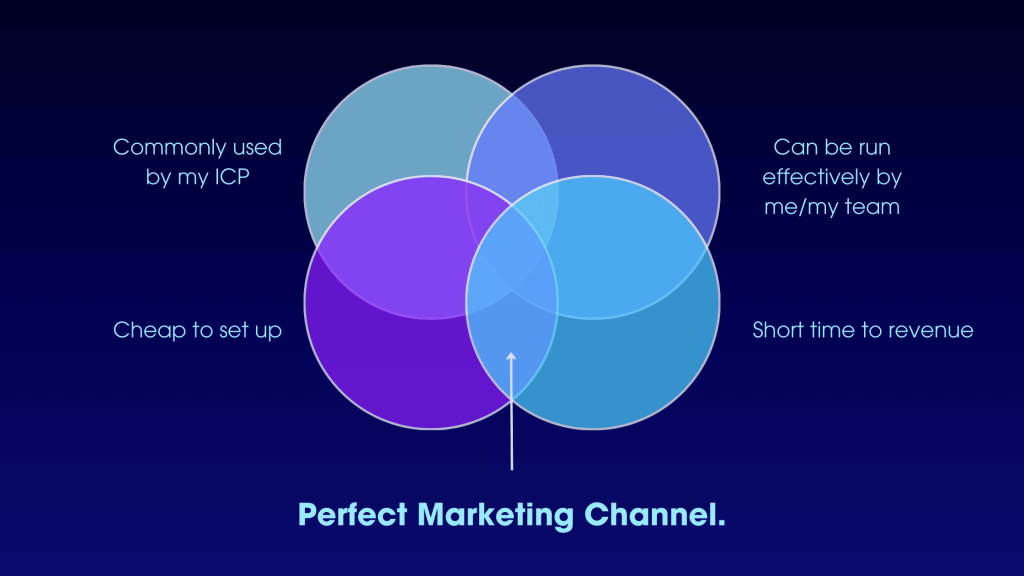You want to start seriously marketing your small business. You’ve read articles on everything from optimising your Google Business Profile to posting on LinkedIn. But, when it comes to your budget, you’re stuck.
You’re not alone. Most business owners (and marketers) we speak to find budget allocation difficult. That’s why we’ve put together a step-by-step guide to splitting your marketing budget – one that’s designed specifically for small businesses with under 20 employees.
As you read on, remember that this is general information only. You’ll need to adapt it to your business, and it’s definitely not financial or business advice.
Before: Make Sure Your Budget Is Big Enough
The best split in the world can’t save you if your marketing budget is too small. Like most things, marketing is subject to a threshold effect – that is, you need to pass a certain investment threshold to start seeing meaningful results.
There’s no perfect rule for setting your budget, but, as a rule of thumb, 15–20% of annual revenue is often right for small businesses. Keep a few things in mind:
- That percentage is for your marketing function. It includes marketing channels/activities that are often owned by sales staff, like cold outreach and networking.
- It includes staff hours and equipment costs, not just ad spend. If your BD rep earns $122,650 per year including super, for example, each hour of their at-work time is worth just over $67.
- Newly founded businesses or businesses with ambitious growth goals may need a higher percentage.
- That percentage may decrease as your business grows. You’ll start to enjoy economies of scale and the benefits of a more established brand, like word-of-mouth referrals. (A common figure for more established businesses is 8–15%.)
1. Work Out Where Your Buyers Are
Once you’ve established your budget, work out your ideal customers’ sources of influence. Sources of influences are channels that they’ll consult in some way during their buying journeys. Once you know how your ideal customers learn about their problem and research potential solutions, you’ll have a good idea of which channels should form part of your marketing mix.
The simplest way to research sources of influences is to set up interviews with your existing customers. If possible, select your top 20% – the ones who spend the most, stay the longest, and are the least expensive to service. If you can’t talk to existing customers, find people who fit your ideal customer profile (ICP) and offer gift cards/charity donations for a 20-minute interview.
Once you’ve got answers from at least 8 customers (aim for double that if your business is B2C), aggregate your responses and pattern-match. You’ll probably see that certain sources of influence come up again and again.
2. Set Up Hybrid Attribution
Before you actually allocate your budget, think about how you’ll measure your budget’s success. The easiest way to see which channels are actually delivering results is through hybrid attribution. That means combining 3 different types of attribution:
- self-reported attribution (like asking ‘How did you hear about us?’ on a form)
- multi-touch software-based attribution (which uses software to see how users arrive at your website and what pages they visit)
- sales-reported attribution (when your sales personnel ask customers how they heard about you).
You need both self-reported and software-based attribution because not all touchpoints are digital – if a customer gets referred to you by a friend, for example, you wouldn’t know how they heard about you without asking them. Sales-reported attribution helps add colour to self-reported responses and is useful if your business gets a lot of calls, emails or DMs.
Hybrid attribution can be complex to set up, so ask your marketing agency/team for help.
What About Marketing Mix Modelling?
Marketing mixed modelling (MMM) is a type of measurement that looks at the relationship between marketing inputs and past business outcomes. Unlike hybrid attribution, it doesn’t use the data from individual customers – instead, it relies on correlation to forecast future outcomes. While MMM can be extremely effective, it’s hard to set up, requires at least 2 years of marketing and business data, and isn’t really appropriate for small businesses.
3. Choose Your Channels
You’ve interviewed ICP-fit buyers. You’ve set up attribution. It’s time to select your marketing channels. How? Gather the sources of influences your buyers cited and then split your budget evenly across all of them.
Just kidding – that’s a great way to kill your business. We often see small business owners who’ve fallen into the trap of overextension (trying to be everywhere at once with limited resources). Instead, start with 3 channels: your primary channel and 2 secondary channels. Your primary channel gets 50–60% of your budget and your secondary channels get 10–15% each.
Do look at the most-cited sources of influence, but also think about channel establishment costs, time to revenue, and your marketing capabilities. Your marketing agency/team can help you determine the 3 best options.

The remaining ~15% should be split between website costs (content maintenance, hosting, and so on), strategy and reporting costs (including non-channel-specific meetings), and general software costs.
Remember Brand Assets
Before you go ahead and actually allocate your budget, make sure you have your brand assets set up. That includes a website with essential pages, a logo, and, potentially, visual and textual style guides. If you don’t already have them, deduct the cost of their creation from your budget and then split the remaining budget as described above.
4. Review and Adjust Your Allocations
Review your new budget after 90 days. Look at what’s delivering revenue and think about adjusting your split or even replacing poorly performing channels. But, before you make any changes, keep a few things in mind.
- Some channels, like organic search, have longer ramp-up times than others. You should definitely be seeing revenue from your primary channel, but positive signals (such as leads or enquiries) from your secondary channels are acceptable.
- Consider the average interpurchase time for your category. If you work with high-value accounts that have long time periods between new purchases, don’t expect to see floods of new revenue in a few months. Your channels may take some time to bear fruit.
- Think about how you’re using your channels. If you’re focusing on problem, solution and/or brand awareness, expect to wait longer for revenue.
- Keep in mind that marketing is integrated – your channels work together. Don’t dismiss a channel just because it isn’t the last touchpoint for many customers.
Once you start seeing consistent revenue from your primary channel, you have 2 options: you can maintain your current split and just scale it up, or you can maintain the absolute investment in your primary channel, bump up one of your secondary channels to the same level of investment, then add on an additional secondary channel with your remaining budget.
If everything we’ve discussed sounds complex … well, it is. Budget allocation is difficult even for seasoned marketers. But getting it right is well worth the effort. If you can work out where to focus your marketing efforts, you’ve solved the biggest challenge to business growth.
And, if you don’t feel confident setting a budget yourself, talk to an agency or consultant. They’ll help personalise and implement the advice in this guide – which can save you a lot of time, headaches, and wasted money.












